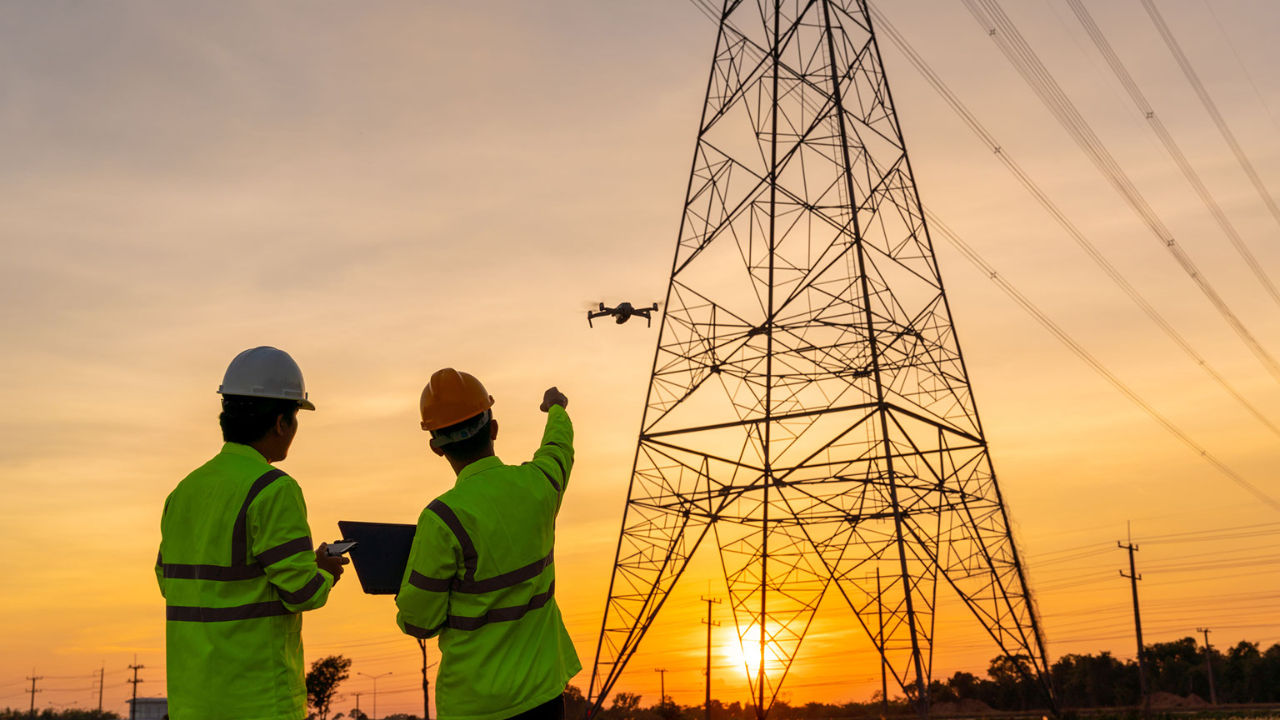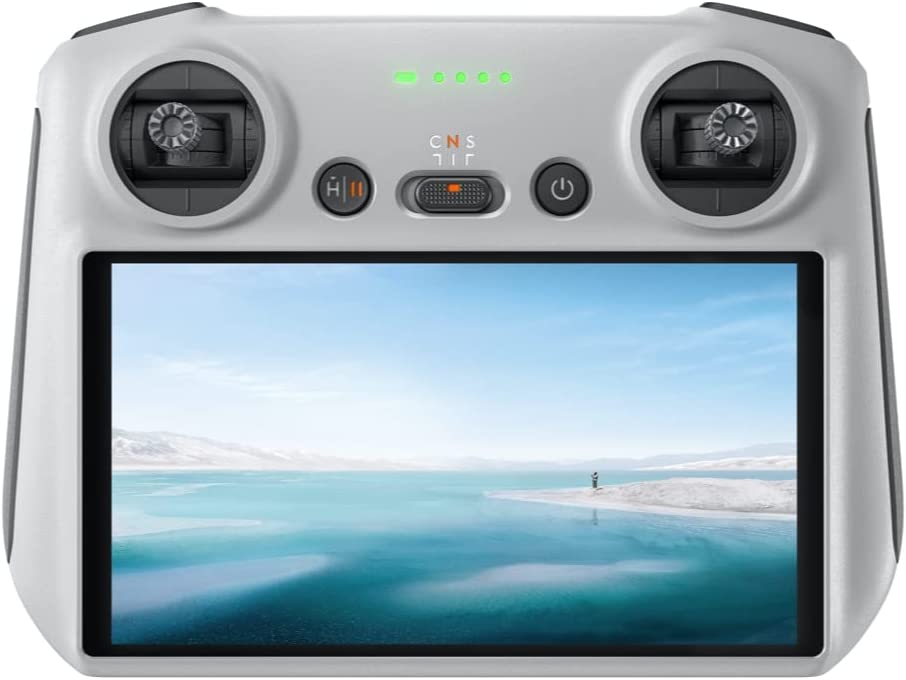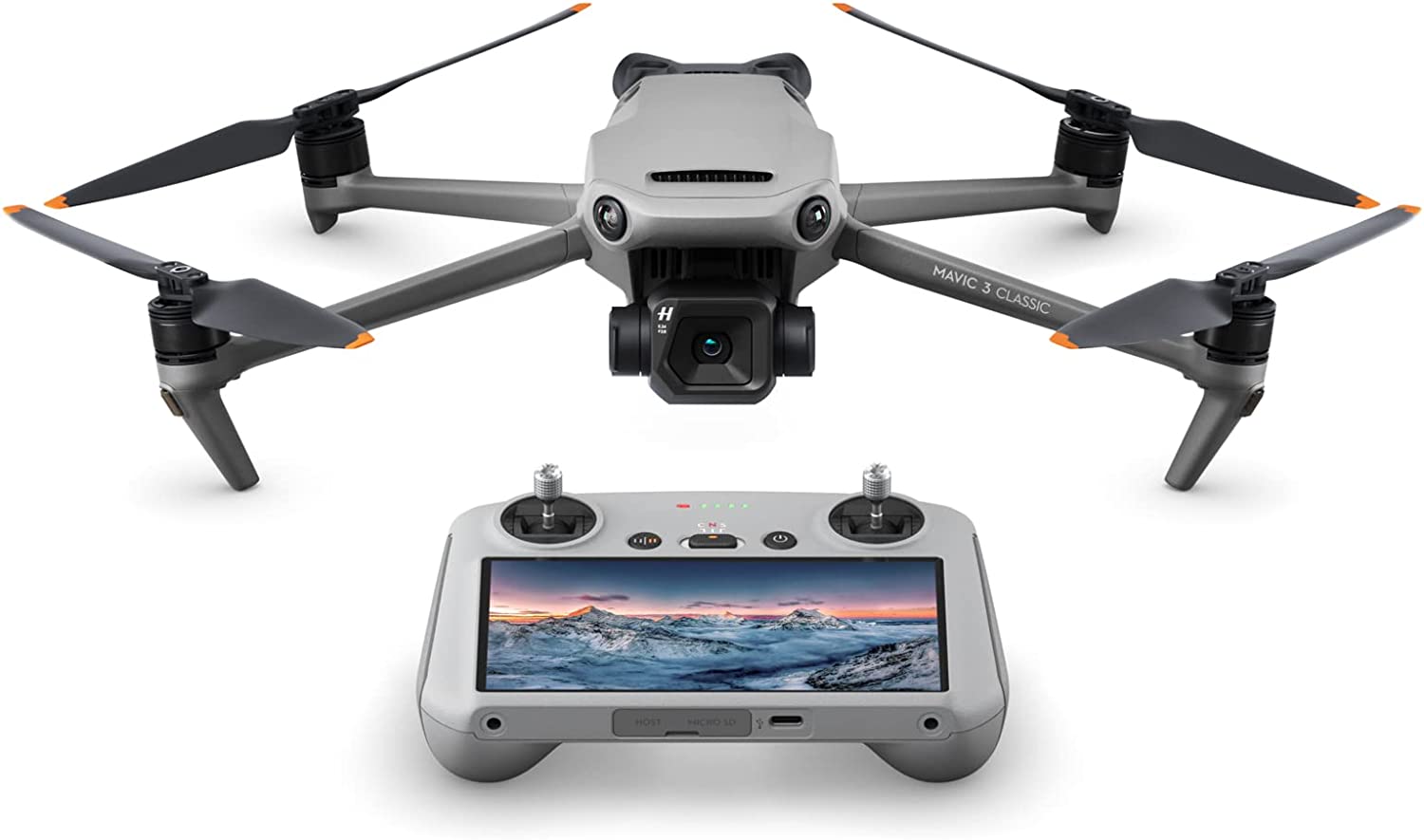This post may contain affiliate links. We may receive a small commission, at no cost to you, if you make a purchase.
Read Disclosure

Introduction
Welcome to our DJI Mavic 3 Classic Guide, where we explore the world of drones and their features. As a testament to their progress, the Mavic 3 Classic offers advanced capabilities that appeal to both new and experienced drone enthusiasts. In this comprehensive guide, we’ll discuss key aspects of drones, including top brands, models, essential features, and the rules and regulations governing their use. Understanding these factors will help you make an informed decision when purchasing a drone.
Drone Brands and Top Models
When it comes to drone brands, DJI is often considered the industry leader, offering a wide range of high-quality and feature-rich drones. Other notable brands include Autel Robotics, Yuneec, Parrot, and Skydio. Among the top drone models in the market, the DJI Mavic 3 Classic stands out for its advanced features and camera capabilities, followed closely by the Autel Robotics EVO Lite+, Skydio 2, Yuneec Typhoon H Pro, and Parrot Anafi USA.
Drone Flight Time and Camera Performance
Flight time is an important factor to consider when purchasing a drone, as it determines how long the drone can stay airborne. Most drones have an average flight time of 20 to 40 minutes, though this can vary depending on the specific model. Some drones offer extended flight time options, such as swappable batteries, to keep them in the air for longer periods.

Camera performance is another crucial aspect, especially for those interested in aerial photography or videography. The DJI Mavic 3 Classic boasts a 20MP camera with 5.1K video resolution, making it an excellent choice for capturing stunning images and videos. Other drones, such as the Autel Robotics EVO Lite+ and Yuneec Typhoon H Pro, also offer impressive camera capabilities with 50MP and 20MP cameras, respectively, and 4K video resolution.
Accessories and Add-ons for Your Drone
To enhance your Quadcopter flying experience and protect your investment, consider purchasing additional accessories and add-ons. Some popular options include:
- Extra batteries: Having additional batteries can extend your drone’s flight time and allow for more flying sessions without needing to recharge.
- Carrying case: A protective carrying case makes it easy to transport your drone and its accessories safely.
- Spare propellers: Accidents can happen, and having spare propellers on hand ensures that you can quickly replace any damaged ones and continue flying.
- Remote controller: While many drones come with a dedicated controller, upgrading to a more advanced model can provide additional features and greater control over your drone.
- ND filters: Neutral density (ND) filters can enhance the quality of your drone’s photography and videography by controlling exposure and reducing glare.
- Landing pad: A landing pad provides a clean, stable surface for your drone to take off from and land on, minimizing the risk of damage from debris or uneven terrain.
Learning Resources and Online Communities
To improve your drone flying skills and stay informed about the latest industry developments, consider exploring online resources and joining drone communities. Many websites, forums, and social media groups offer helpful tips, tutorials, and advice for drone enthusiasts. Additionally, participating in local drone clubs or meetups can provide hands-on experience, networking opportunities, and the chance to learn from fellow drone pilots.
Finding the Best Drone for Your Needs
Drones come in various price ranges, catering to different budgets and requirements. Entry-level Quadcopter typically cost between $100 and $300, providing a basic set of features suitable for beginners. Mid-range drones, priced between $300 and $1000, offer more advanced functionality, making them ideal for intermediate users. High-end drones, costing over $1000, are designed for professional use and come equipped with state-of-the-art features, such as the DJI Mavic 3 Classic.


Before flying a drone around your neighborhood, it is essential to review local laws and regulations to ensure compliance. Privacy concerns should also be taken into account, as well as avoiding flying near airports, sensitive areas, or large gatherings.

Different Types of Drones
Drones can be categorized into several types based on their intended use. Recreational drones are designed for casual users and hobbyists, while racing drones are built for speed and agility, catering to those interested in drone racing. Aerial photography and videography drones, like the DJI Mavic 3 Classic, prioritize camera performance and stability, whereas industrial and professional drones are tailored for specific tasks, such as surveying or agricultural applications.
Drone sizes vary widely, ranging from nano drones that fit in the palm of your hand to large drones weighing over 2 kilograms. Mini drones, weighing less than 250 grams, are popular among hobbyists due to their compact size and lightweight design.
Maintenance and Safety Tips
To keep your Quadcopter in optimal condition and ensure a safe flying experience, follow these maintenance and safety tips:
- Regularly inspect your drone for damage, paying particular attention to the propellers, motors, and battery.
- Keep the drone’s firmware up-to-date to benefit from the latest improvements and bug fixes.
- Maintain a safe distance from people, animals, and property while flying your drone to minimize the risk of accidents.
- Avoid flying in extreme weather conditions, such as high winds, rain, or snow, which can affect your drone’s performance and stability.
- Familiarize yourself with the drone’s fail-safe features, such as the return-to-home function, in case of emergencies or loss of control.
- Practice flying your drone in open, obstacle-free areas before attempting more challenging environments.
Conclusion
Investing in a high-quality drone like the DJI Mavic 3 Classic can provide a rewarding and enjoyable experience for both novice and experienced pilots. By carefully considering factors such as brand reputation, cost, flight time, camera performance, drone type, and local regulations, you can make an informed decision about the best drone for your needs. Equipping yourself with the right accessories, following maintenance and safety guidelines, and engaging with the drone community can help ensure a safe and fulfilling drone flying experience.
AFFILIATED LINKS/ADVERTISING NOTICE All links are Affiliated where possible. When you click on links to various merchants posted here and make a purchase, this can result in me earning a commission from qualifying purchases.”; I am a participant in the Amazon Services LLC Associates Program, an affiliate advertising program designed to provide a means for sites to earn advertising fees by advertising and linking to AMAZON Sites (including, but not limited to Amazon US/UK/DE/ES/FR/NL/IT/CAN) Last update on 2024-04-21





